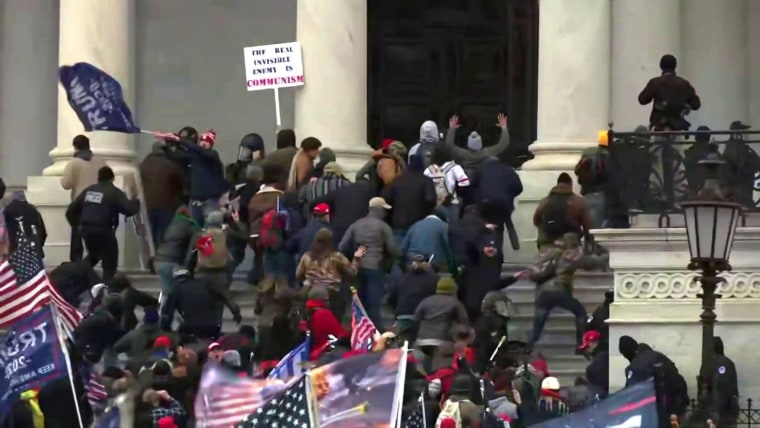[ad_1]
WASHINGTON — The acting chief of the U.S. Capitol Police told members of Congress on Thursday that while they knew armed extremists could commit violence at the Capitol on Jan. 6, intelligence collected in advance of the assault showed “no credible threat” of the size and scale of the riot that occurred.
Acting Capitol Police Chief Yogananda Pittman said in her opening statement that her department prepared for that day’s events based on the information gathered by law enforcement, including the FBI and the intelligence community.
“It has been suggested that the department was either ignorant of or ignored critical intelligence that indicated that an attack of the magnitude that we experienced, on January 6 would occur,” Pittman told the House Appropriations subcommittee that oversees funding for the legislative branch.
“The department was not ignorant of intelligence indicating an attack of the size and scale we encountered on the 6th,” she said. “There was no such intelligence. Although we knew the likelihood for violence by extremists, no credible threat indicated that tens of thousands would attack the U.S. Capitol, nor did the intelligence received from the FBI, or any other law enforcement partner indicate such a threat.”
The comments echoed the testimony her predecessor and other current and former law enforcement officials provided to the Senate earlier this week.
Pittman, who replaced former Capitol Police Chief Steven Sund after he resigned following the attack, explained that her department had prepared an intelligence assessment on Jan. 3 that outlined what they expected to take place three days later. The assessment, she said, noted that “militia members, white supremacists, and other extremist groups” planned to participate in the event and that the groups planned to be armed. It also said that “the threat of disruptive actions or violence cannot be ruled out.”
That assessment was “shared widely” among Capitol Police and emailed to all officers above the rank of sergeant, said Pittman, who added that sergeants and lieutenant were then responsible for communicating its information to rank-and-file officers. It was also emailed to the House and Senate sergeants-at-arms, she said.
Based on the assessment, the Capitol police made “significant changes” to their security posture, which involved increasing protection for certain members of Congress, deploying agents to provide protection outside the homes of congressional leaders and sending “counter-surveillance agents” to the Ellipse just south of the White House, where President Donald Trump was holding his rally, on the morning of Jan. 6. They also made plans to “intercept the radio frequency used by some demonstration group” and monitor their communications that day.
Despite the assessment, “the department was not prepared for the massive groups of violent insurrectionists that descended” on the Capitol,” Pittman said in her written testimony. She said Capitol police were “quickly overwhelmed” by thousands of insurrectionists, many of whom were armed.
Ultimately, Pittman said that her department still “succeeded in its mission” that day to protect congressional leaders, all lawmakers and the democratic process.
Acting House Sergeant at Arms Timothy Blodgett said in his prepared testimony for the hearing that “the tragedy of January 6th is rooted in missing intelligence and analysis that negatively impacted the decision-making process.”
“Intelligence requires finding needles in a haystack,” he wrote. “On January 6, there was a failure to either gather, synthesize, or disseminate intelligence and there were indications that intelligence was muddled or contradictory.”
Blodgett replaced Paul Irving, who resigned as House sergeant-at arms after the attack. Blodgett said while his office received the Jan. 3 assessment from the U.S. Capitol Police, every single subsequent intelligence report over the next three days indicated only “remote, highly improbable, or improbable” chance of civil disobedience or arrests, he said.
“The intelligence missteps cascaded into inadequate preparation, which placed the health and lives of front-line officers at risk,” he said.
The security changes planned in the wake of Jan. 6 will “come with an accompanying cost,” Blodgett said.
“It will not only take funding, manpower, and training, but also changing organizational structures to ensure that security needs are met,” he said.
[ad_2]
Source link
